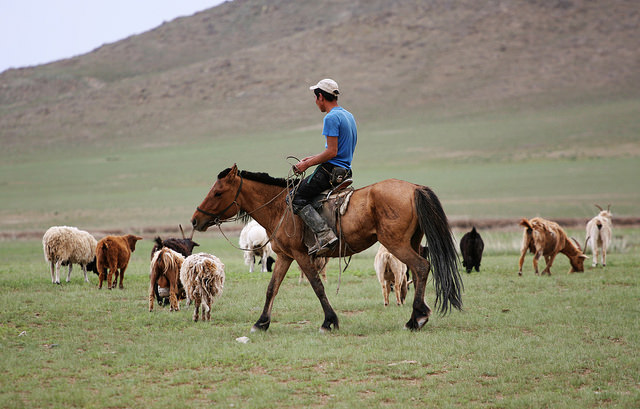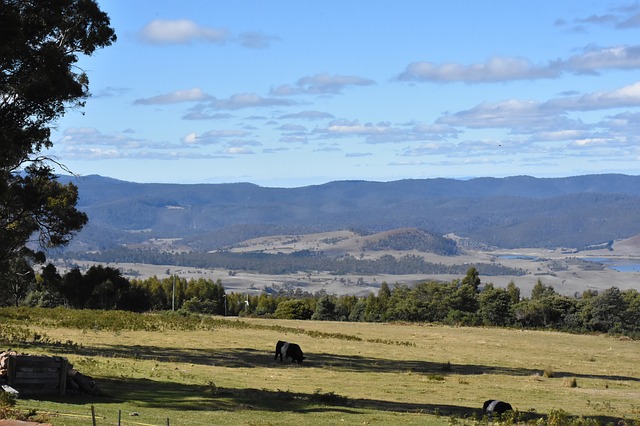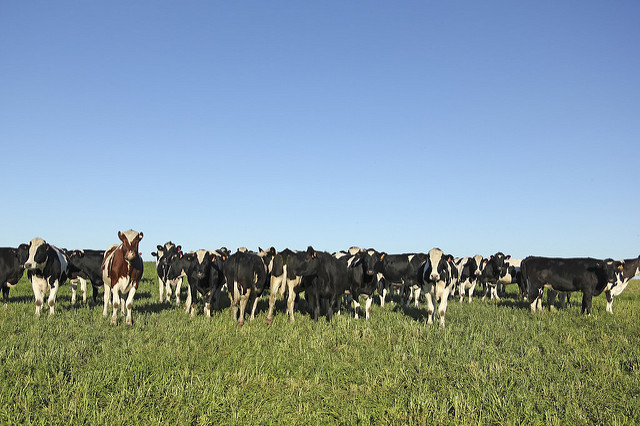



Weekly beef and dairy digest: cattle herds increase across the globe
Cattle herds in Latin America, China and Australia are growing while Ukraine's livestock market continues to decline.Updates from Latin America
Argentine beef exports expected to fall in 2021
USDA this week said Argentine beef exports in 2021 are forecast at 770,000 tonnes carcass weight equivalent, 50,000 tonnes lower than in 2020 on lower slaughter inventory due to negative margins, with overall exports heavily dependent on China's demand and market recovery from COVID-19 impacts. Cow-calf operators are benefitting from high calf prices. Domestic beef consumption is at a record low to the benefit poultry and pork products.

Beef production for 2021 is forecast at 3.1 million tonnes, in line with USDA official numbers, but 4% below the 2020 level. Beef producers are enduring rising production costs, including high corn prices which, together with lower FOB prices, hurts margins and contributes to a slow but steady fall in cattle inventory for slaughter which is expected to drop to 13.54 million head in 2021. In addition to higher feed costs, high calf prices and low fed cattle prices are impacting cattle production.
USDA analysis of Australia's cattle market
Lower cattle slaughter, beef exports seen in Australia in 2021
Australia beef industry is finally showing signs of entering a much-anticipated herd rebuilding phase, according to USDA. Previously expected to commence in the second half of 2020, it is now expected to have started in early 2021.
Following the severe impacts of a two-year drought in 2018 and 2019 across much of the beef producing region in Australia, which resulted in cattle producers reducing stocking rates or destocking their properties, much needed rains have arrived. This has boosted pastures and led to along a near record grain harvest in late 2020, reducing supplementary feed costs. This combination of events, along with good rain forecasts across the country, sparked strong re-stocker demand by producers.

This herd rebuilding has firmed FAS/Canberra’s 2021 forecasts of lower cattle slaughter, cattle exports, beef production, and beef exports. With a reduced breeding herd and more females expected to be retained for breeding in 2021, overall cattle slaughter is expected to fall for the second straight year. With much improved pasture production, carcass weights are expected to moderately improve, partially offsetting the lower slaughter number.
Beef production in 2021 is forecast to reach 2.075 metric tonnes (MT) carcass weight equivalent (CWE), down 2% from 2020 and the lowest level since 2003. This is expected to lead to another year of declining Australian exports in 2021, down 5% from 2020 to 1.4 million metric tonnes (MMT) (CWE).
The view from China
China's cattle herd is expected to grow as producers modernize production
Cattle Production: The cattle herd is forecast to grow to over 97 million head in 2021, driven by strong beef prices and increasing consumer demand for beef products. More beef cattle operators are modernizing production, incorporating imported genetics, and cross-sector integration between dairy and beef cattle production. However, beef cattle’s comparatively longer life-cycle means investments and production will increase gradually.
Beef Production: Beef production is forecast to increase by 4% in 2021 as cattle retained in 2020 are brought to slaughter. Beef production will be constrained by the high cost of feed and lower priced imported beef products. Consumer demand for beef products has expanded beyond traditional HRI into ready-to-cook products and quick service delivery.
Beef Imports: Beef imports are consumed both in quick service and high-end HRI sectors. As the economy rebounds in 2021 demand from both food service sectors is forecast to drive increased imports. Additionally, consumer awareness of standardized international cuts such as ribeye, T-bone, and short rib are continuing to drive growth of imported beef.

Updates on Europe's cattle sector
Europe becomes net beef exporter, but herd expected to decrease in 2021
Despite falling beef production, the EU became a net exporter in 2020. In 2021, the EU cattle herd is forecast to further contract (except for the dairy herd in Ireland and beef herd in Central Europe).
The EU dairy herd is shrinking because of the increased efficiency of the sector, while the EU beef herd is shrinking due to structural unprofitability. With the reduction in the cattle herd, beef production is also forecast to fall. Moreover, due to the closed-nature of the market, beef consumption will inevitably follow.
In the spring of 2020, slaughter was disrupted due to coronavirus (COVID-19) outbreaks and the associated logistical and slaughter restrictions but recovered during the second half of the year. In 2020, EU beef imports and exports trended in an opposite direction. While imports of, in particular, high quality beef were cut due to the lack of demand, beef exports rose, which led the EU to become a net beef exporter for the first time since 2011. In 2021, beef imports are forecast to recover anticipating a re-opening of the food service sector. Additionally, beef exports are projected to follow their gradual trend of export market expansion.
Ukraine livestock industry continues to decline
Ukraine’s livestock inventory continued on its three decades-long downward trend and will remain on it in 2021, said USDA in a recent report. Declining cattle numbers will lead to lower Ukrainian beef and live animal exports.

Overall, the impact of COVID-19 on Ukrainian red meat production and trade has been insignificant, although Ukrainian domestic market distribution channels changed notably
Ukraine’s cattle inventories continued to contract in 2020. No change in the downward trend is expected in 2021. The majority of cattle in Ukraine are either dairy-purpose or dual-purpose animals.
Dairy farmers often view beef as a by-product for their industry production. The efficiency of milk production in the household sector and the majority of industrial farms remain low, leading to slow contraction of cattle inventories. Although milk prices have remained attractive and grew through 2020, increased feed costs resulted generally in a decrease in the profitability of milk production.
Ukrainian domestic demand for beef is declining and provides little support to Ukrainian cattle farmers. Beef remains the most expensive protein and consumers often switch to less expensive poultry and pork.
A decline in the availability of cattle led to a decrease of both live animal and beef exports in 2020. Although the live cattle market is volatile, exports of live cattle for slaughter and beef are expected to decline further in 2021. Middle Eastern, North African and Central Asian countries remained the major markets for Ukrainian cattle.
In 2020, China became Ukraine’s number one destination for Ukrainian beef only three years after the Chinese market was opened to Ukrainian exports. The majority of the remaining beef is shipped to traditional Central Asian markets and neighboring Belarus.
.jpg)
Advertised prices for US dairy products at major retailers
During the period ending 03/05/2021 to 03/11/2021, the most advertised dairy item was conventional 48 to 64-ounce containers of ice cream. The national weighted average price is $3.16, up $0.11 from last week. There are no ads for organic 48 to 64-ounce ice cream.
Conventional 8 oz. cream cheese has an average price of $2.13, down $0.15 from last week. There are no ads for organic 8 oz. cream cheese. The weighted average advertised price for conventional 8-ounce shred cheese is $2.44, down $0.11 from last week. Organic 8-ounce shred cheese advertised prices average $3.81, resulting in a $1.37 organic price premium. Conventional cheese ads decreased 2%. Organic cheese ads decreased 61%.
The national weighted average price for conventional yogurt in 4-6 ounce containers, the most advertised conventional yogurt container size, is $0.56, down $.03 from last week. Ads for organic 4 to 6-ounce Greek yogurt have an average price of $1.25, up $.18 from last week, and yielding an organic price premium of $0.69. Conventional yogurt ads decreased 25%. Organic yogurt ads decreased 75%.
The national weighted average price for conventional half gallon milk is $1.60, unchanged from last week. The national weighted average advertised price for organic half gallons is $4.01, resulting in an organic price premium of $2.41. Organic half gallon milk was the most advertised organic dairy item.
Read Jim Wyckoff's updates on the global swine industry on The Pig Site.
TheCattleSite News Desk
IMPORTANT NOTE: I am not a futures broker and do not manage any trading accounts other than my own personal account. It is my goal to point out to you potential trading opportunities. However, it is up to you to: (1) decide when and if you want to initiate any traders and (2) determine the size of any trades you may initiate. Any trades I discuss are hypothetical in nature.
Here is what the Commodity Futures Trading Commission (CFTC) has said about futures trading (and I agree 100%): 1. Trading commodity futures and options is not for everyone. IT IS A VOLATILE, COMPLEX AND RISKY BUSINESS. Before you invest any money in futures or options contracts, you should consider your financial experience, goals and financial resources, and know how much you can afford to lose above and beyond your initial payment to a broker. You should understand commodity futures and options contracts and your obligations in entering into those contracts. You should understand your exposure to risk and other aspects of trading by thoroughly reviewing the risk disclosure documents your broker is required to give you.



